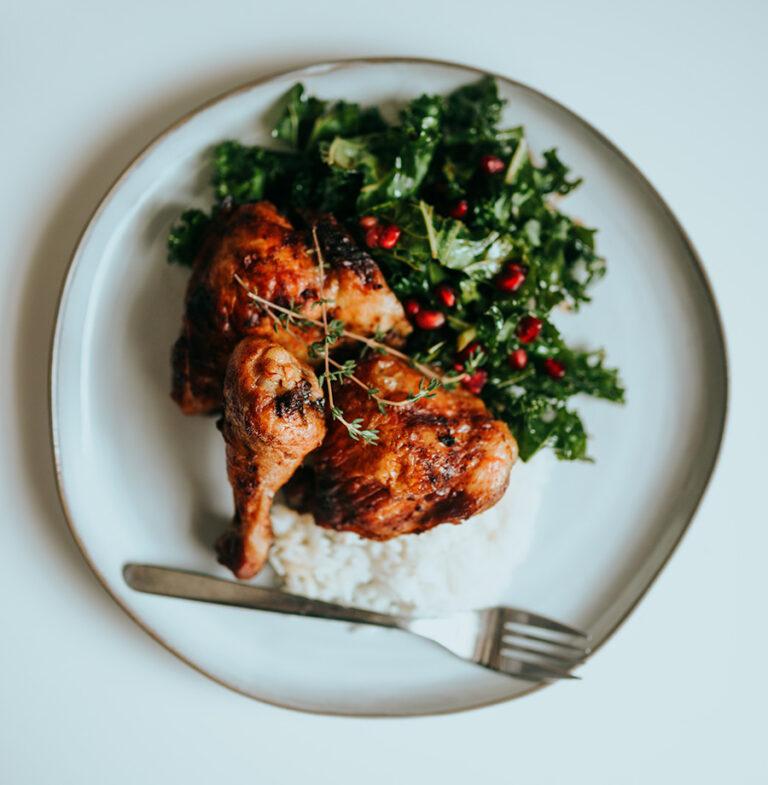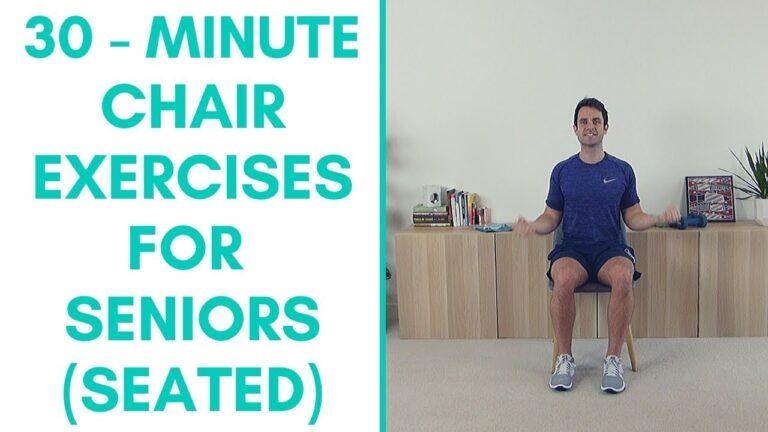Heading out the door? Read this article on the new Outside+ app available now on iOS devices for members!
Download the app.
Over the past few months, it seems everyone has been requesting one thing—yoga for neck and shoulder relief. But we can look beyond seated neck stretches and bring a unique approach to finding upper body release by incorporating half binds, neck releases, and twists into common yoga poses.
The magic of this 20-minute yoga practice lies in its ability to target not just the neck and shoulders but also the supporting muscles we often overlook. We’re not only working on opening the chest— think of those pectoral muscles that tighten from long hours hunched over a desk—but also addressing the upper back, biceps, and triceps. It’s all interconnected. Sometimes, pain in one spot is just a symptom of a deeper issue elsewhere, a phenomenon known as referral pain.
The intention behind this 20-minute yoga class was practicality. I designed it to incorporate easily into your daily routine. You can revisit it day after day, making it an essential tool in your wellness arsenal. It’s not about rigidly following instructions. It’s about exploring variations and finding what works best for you. This practice opens doors to new possibilities in familiar poses and empowers you to tailor your yoga journey to your unique needs.
Another essential aspect that differentiates this yoga for shoulder and neck relief from other classes is its simplicity. Unlike some practices that require props like straps and blocks, this routine is prop-free. It’s a reminder that, in our pursuit of wellness, sometimes the most effective solutions are the simplest.
20-Minute Yoga for Neck and Shoulder Relief
If you’re experiencing any discomfort, stiffness, or tension in your neck, shoulders, upper back, or even your chest, this practice is perfect for you. This yoga practice is suitable for all experience levels. You probably won’t need any props to practice it.
Seated Chest Opener
To begin, find a comfortable seated position. You can kneel or sit cross-legged. Find some length along your spine and relax your shoulders away from your ears. Bring your hands behind your hips and come onto your fingertips. Bend your elbows slightly, as if you’re leaning backward, and imagine pushing your chest toward the sky. Keep a gentle bend in your elbows and try to bring your elbows closer to one another behind your back, as if you’re squeezing your shoulder blades together. At the same time, lift your chest, close your eyes, and focus on your breath. Feel your ribcage expand in all directions each time you inhale.
Seated Side Bend
From sitting and leaning back, reach your right arm alongside your head and toward the left for a nice side-body stretch. Rotate your chest toward your left knee and thigh, and tuck your chin toward your chest to lengthen through your right side. Imagine someone gently pulling your right hand.
Side Body Fold
From your Seated Side Bend, bring your fingertips to the mat and extend the stretch along your right side. Relax your head and neck, allowing them to become heavy and tension-free.
Seated Half Cactus
Keep your left fingertips or palm on the mat as you bring your right hand and arm out to the side in a “half cactus” shape and rotate your chest to face forward. Bend your right elbow about 90 degrees and squeeze your shoulder blades together. Fully relax your head and let it lean to the left, releasing tension.
Slowly return to the center, rolling your shoulders a few times. Repeat these stretches on the other side.
Cat-Cow
Start in a Tabletop position, positioning your hands slightly wider than your shoulders and pushing through your fingertips and knuckles. Inhale as you lower your belly and lift your head in Cow Pose, creating a gentle backbend.
Exhale to reverse the motion, rounding your back like a cat, tucking your chin toward your chest, and emphasizing the separation of your shoulder blades in Cat Pose. Keep flowing in between these two poses.
Child’s Pose (Balasana)
After a few cycles of Cat-Cow, return to a neutral Tabletop. Bring your big toes together to touch and sit your hips back toward your heels. Walk your hands as far forward as you can, coming onto your fingertips if you like, and then lower your forehead to the mat in Child’s Pose. As you stretch your arms, imagine pushing your shoulders and armpits toward the mat to relieve tension. Focus on your breath, feeling your ribcage expand as you inhale and contract as you exhale. Lift yourself back up to Tabletop.
Downward-Facing Dog (Adho Mukha Svanasana)
From Child’s Pose, lift your hips and move into Downward-Facing Dog. You can have your feet wider apart than usual and bend your knees comfortably. Concentrate on relaxing your neck and letting your head feel heavy. You can gently move your chin from side to side and roll your shoulders back, ensuring they aren’t hunched toward your ears. Allow gravity to create a gentle traction.
Rag Doll
Walk to the front of the mat, keeping your feet wide apart. In this forward fold, your legs don’t have to be completely straight. You have two options. Option one is to hold onto your opposite elbows or upper arms and allow yourself to dangle and sway. Option two is to interlace your hands behind your neck or the base of your skull, bringing your elbows toward your chin and cheeks to add a neck release. Stay here for a few breaths to release upper body tension.
Lizard Pose with Neck Release
Transition to a Low Lunge by stepping your left foot back and lowering your left knee to the mat. Stay here or turn your right foot out at about a 45-degree angle for a more intense hip stretch. Reach your right hand behind you toward your left hip, with your palm facing away from you. Let your left ear drop toward your left shoulder. You can stay up on your left hand or come onto your left forearm. This stretch provides a big twist and is also beneficial for your hips and lower back. Keep your facial muscles relaxed and roll your right shoulder back. Take a couple of deep breaths here.
Rabbit Pose With a Bind
Come out of Low Lunge by stepping your right foot back and coming to your knees. Interlace your hands behind your lower back. Pull your shoulders back, squeeze your elbows together, and maybe lift your chest to take a slight backbend. Transition to Rabbit Pose by gently bringing your forehead to the mat and then rolling onto the crown of your head. Lift your knuckles toward the ceiling and draw your shoulders away from your ears. Breathe here.
Step your left foot forward to the top of the mat and return to Lizard Pose on the second side. Take a few breaths there before moving into Rabbit Pose a second time.
Broken Wing Pose
From Rabbit Pose, slide forward onto your belly. As you lie on your belly, extend your left arm out to the side. I prefer doing this with my arm bent at a 90-degree angle, so my elbow is slightly closer to the front of the mat than my shoulder. Feel free to experiment with the arm position.
Slowly roll onto your left hip, left shoulder, and left side of your head Try to relax and keep your head down on the mat. I use my right hand to gently push into the ground to create a nice stretch in my left shoulder, biceps, and chest. Some people find it more comfortable to bring their right hand toward their lower back, while others like to step their right foot back behind them to intensify the stretch. Breathe deeply here, and with each exhalation, try to release further into the pose.
Sphinx Pose
From your Broken Wing Pose, straighten your leg and roll onto your belly. If it feels good, take a moment to lift into a little Sphinx Pose for a breath or two to reset.
Come back to a neutral position and, when you’re ready, move into Broken Wing on your other side.
Eagle Arms
Return to a comfortable seated or kneeling position. (You can press yourself back and sit your hips onto your heels or feel free to sit cross-legged.) Start by bending your elbows in front of you at about a 90-degree angle. Wrap your right arm under your left at the elbows in Eagle Pose. You can try to wrap at the wrists to bring your palms to touch or bring each hand to the opposite shoulder. Ensure your elbows remain lifted as you draw your shoulders away from your ears. Move your forearms away away from your face. For an added stretch, you can drop your chin to your chest. Take deep breaths, focusing on your upper back, and stay in the pose for one more deep breath. When ready, release your arms.
Now, bring your fingertips back behind you, similar to at the beginning of the class. Lift your chest and squeeze your elbows toward each other, maintaining a slight bend in your elbows. When you’re ready, practice Eagle Arms on the second side.
Seated Neck Release
Continue with the yoga for shoulder and neck relief by coming into a comfortable seated position. Start by extending your right fingertips to the side and gently drop your left ear toward your left shoulder. This opens up the right side of your neck. Feel free to experiment with the angle of your chin – if you lower it, you’ll target the back of your neck and shoulder. Keeping it neutral works for some, while lifting it up stretches the front of your neck. Adjust to where you hold the most tension. Allow gravity to do the work for you in this stretch. To transition, gently tuck your chin down toward your chest, roll your head back to the center, and lift it back up, relaxing your shoulders. Now, repeat the same neck release on the other side.
Easy Pose (Sukhasana)
As you conclude your 20-minute yoga practice, you have the option to take a moment to observe how your shoulders feel. Gradually close your eyes, bringing your awareness to your jaw, neck, shoulders, upper back, and chest. Notice how this area feels now. Have there been any changes or improvements as a result of your time on the mat? This reflection allows you to connect with the effects of your yoga for neck and shoulder relief practice and how it has influenced your body.
Kassandra Reinhardt is an Ottawa-based Yin Yoga and vinyasa yoga instructor, YouTuber, author, and the face behind Yoga with Kassandra. She is on a mission to help others feel great with yoga. One of the first yoga instructors to embrace online teaching, Kassandra’s YouTube channel has grown to more than 2.1 million subscribers and has over 230 million views. Kassandra has truly provided accessibility to yoga and she is expanding her expertise further with the recent release of her guided yoga journal, My Yoga Journey: A Guided Journal, and her daily affirmation card deck, I Radiate Joy.
This content was originally published here.




















